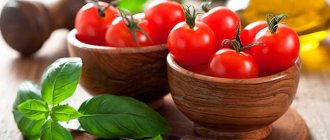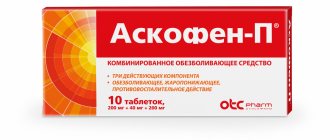Tomato is a tasty and healthy vegetable. It contains a minimum of calories and is rich in fiber and minerals. The red color of the fruit is given by carotenoids - substances with pronounced antioxidant activity that protect tissues and organs from oxidative stress. The redder the tomato, the more carotenoids it contains, which means the healthier it is.
The role of antioxidants in the human diet has been the subject of study by scientists in recent years. Antioxidants have been shown to reduce the frequency and intensity of inflammatory reactions in the body. They protect cells from mutations that lead to degeneration into atypical and the appearance of cancerous tumors. Antioxidants prolong the body's youth, protect against Alzheimer's disease and brain disorders.
Carotenoids give tomatoes their red color (Photo: Pixabay.com)
And in 2021, Japanese scientists confirmed the ability of tomato carotenoids to improve the functioning of the cardiovascular system.
Tomatoes against cancer
The antitumor effect of tomatoes is explained by the presence of the natural oncoprotector lycopene in their composition. This substance is part of the group of carotenoids that give tomatoes their bright scarlet color [1].
Lycopene, along with the plant pigment beta-carotene, is a precursor to vitamin A. Moreover, in terms of its antioxidant power, the anti-cancer dye is 2 times stronger than its “brother.” Considering that oxidative stress underlies tumor development, lycopene inhibits the process of gene mutation and protects T lymphocytes from damage by free radicals. In addition, the pigment resists the binding of cancerous foci to endothelial cells, which prevents them from entering the blood, and, consequently, disrupts the process of growth of tumors [3].
The leaders in lycopene content are tomatoes that have undergone minimal heat treatment (without sterilization). This phenomenon is explained by the destruction of cell fibers (when heated), which facilitates the release of plant pigment to the outside. In addition, when combining tomatoes with vegetable oil, the pharmacological value of the dye doubles.
To prevent cancer, it is enough to consume 10-15 mg of pure lycopene per day. This portion of the substance is contained in 500 ml of tomato juice (natural) or 500 g of fresh tomatoes.
Interesting results were obtained by American scientists from the Detroit Cancer Institute, who observed patients with prostate cancer (in the early stages). Moreover, all patients were in the same condition and were preparing for surgery. Before the start of the experiment, the patients were tested to determine prostate specific antigen (PSA), and then they were divided into 2 groups identical in all respects. Patients from the first category consumed 15 mg of lycopene twice a day, and those from the second did not receive the pigment. After 30 days, a blood test of patients taking the antioxidant showed a 20% reduction in a tumor marker (TAP). In the second group of patients, the level of prostate antigen slowly increased. In addition, after surgical interventions, doctors conducted a comparative analysis of the removed tumors. Thus, in people who consumed lycopene, cancer cells had a minimal tendency to metastasize, and the size of the tumors was much smaller than in patients who did not take the pigment. Based on these studies, scientists came to the conclusion that taking lycopene helps to weaken the malignant process and reduce the risk of relapse of the disease [4].
Along with this, Harvard oncologists conducted a large-scale experiment, as a result of which they were able to “expand” the evidence base of their American colleagues. In the course of research, scientists have established a direct relationship between the amount of tomatoes consumed and a decrease in the severity of malignant processes (including cancer of the stomach, bladder, esophagus, colon, cervix, pancreas and breast). In addition, it is advisable for smokers to consume natural juice to reduce the risk of developing pulmonary emphysema. In order to minimize the harm caused to health, it is advisable to drink 150 ml of tomato juice after each cigarette [5].
Valuable lycopene
According to scientists, the effect of tomatoes is due to their high content of the carotenoid lycopene. The high antioxidant activity of lycopene improves the lipid profile of blood serum and normalizes fat metabolism in the body.
Other biologically active substances that have a positive effect on the circulatory system have also been identified in tomatoes. Among them are saponins, which reduce the amount of saturated cholesterol in the blood. And octadecadienoic acid, which prevents platelet aggregation and maintains normal blood viscosity.
The healthiest tomato juice is without salt and sugar (Photo: Pixabay.com)
Drinking tomato juice for eight weeks reduces saturated cholesterol and improves the health of the circulatory system. Regular consumption over a long period of time serves as a good prevention of hypertension and protects against high blood pressure.
Varieties of tomato juice
Currently, the vegetable drink is present on the shelves of almost all grocery stores. Moreover, the packaging of most of them states “100% natural juice.” However, this is often nothing more than a marketing ploy, since drinks differ in ingredient composition and manufacturing methods.
Types of tomato juice (depending on production technology):
- Freshly squeezed. To prepare the drink, raw ripe tomatoes collected during the mass fruiting season are used. In our own production, nectar is extracted from the pulp of tomatoes, passing through a fine sieve or juicer (preferably auger type).
The packaged drink is obtained by direct extraction, subjected to minimal heat treatment (pasteurization, sterilization). However, due to their short shelf life, such fresh juices are rarely found on store shelves.
- Restored. The production of such juices consists of two cycles: boiling the tomatoes to a thick puree and then diluting it with clean water (to the required consistency). This production technology (canning) allows us to obtain products with a long shelf life in almost any season of the year. However, unlike freshly squeezed juice, the “boiled” drink contains much less nutrients. This means it is less useful for the human body.
In order to determine the quality of the juice, you need to pay attention to the duration of its storage and the harvest season. If in summer-autumn the date of production of nectar is close to the period of purchase, most likely it is a natural product. The shelf life of such goods often does not exceed 2 months. If the drink is labeled as a winter or spring season, the juice is likely reconstituted from tomato concentrate. In addition, with long shelf life, it is better to refuse to buy nectar (since it contains a lot of preservatives) [6].
Chemical composition
Tomato juice competes with carrot nectar in terms of provitamin A concentration, and is even ahead of citrus fruits in terms of ascorbic acid content.
In this case, the ratio of BJU (%) in fruits is 16:2:81. Energy value of tomato juice
| Name | Concentration of substance in 100 g of drink, g |
| Water | 94,24 |
| Carbohydrates | 3,53 |
| Sugar | 2,58 |
| Alimentary fiber | 0,4 |
| Squirrels | 0,85 |
| Fats | 0,29 |
Composition of tomato juice
| Name | Substance content in 100 g of drink, mg |
| Vitamins | |
| Ascorbic acid (C) | 70,1 |
| Choline (B4) | 6,8 |
| Niacin (B3) | 0,673 |
| Alpha tocopherol (E) | 0,32 |
| Pyridoxine (B6) | 0,07 |
| Thiamine (B1) | 0,01 |
| Riboflavin (B2) | 0,078 |
| Phylloquinone (K) | 0,0023 |
| Macronutrients | |
| Potassium | 217 |
| Sodium | 253 |
| Phosphorus | 19 |
| Magnesium | 11 |
| Calcium | 10 |
| Microelements | |
| Iron | 0,39 |
| Copper | 0,42 |
| Zinc | 0,11 |
| Selenium | 0,0005 |
A distinctive feature of tomato juice is its low calorie content. 100 ml of the drink contains no more than 17 kcal, which allows it to be used in the diet of overweight people [7].
Beneficial features
Tomato juice is a natural “regulator” of glucose in diabetes mellitus. In addition, the drink accelerates the transformation of fat into energy, helps with constipation, hypertension and sleep problems. However, you should not abuse it, since an overdose can cause the following adverse reactions from the body: gastritis, kidney stones, heartburn, diarrhea, liver pain, attacks of nausea.
Diabetics, depending on age and severity of the disease, are allowed to drink no more than 200 ml of nectar per day [8].
Benefits of tomato juice (if drunk regularly):
- Normalizes metabolism, reduces the harmful effects of carcinogens, helps remove radionuclides from the blood.
- Activates natural antitumor immunity, prevents the risk of cell mutation, and provides an antioxidant effect.
- Stimulates the synthesis of the hormone of “happiness” (serotonin), increases resistance to stress, and improves vitality.
- Suppresses the growth of pathogenic flora, prevents damage to mucous membranes, and accelerates the healing of erosive wounds.
- Thins the blood, increases hemoglobin, has an anti-sclerotic effect in case of high cholesterol.
- Strengthens the capillary wall, improves the appearance of skin and hair.
- Increases lactation, restores sexual function, increases libido.
- Stabilizes the heart rhythm, strengthens the myocardium, improves oxygen supply to the brain.
- Stimulates intestinal motility, accelerates the transformation of fat into energy.
- Inhibits the growth of malignant tumors and reduces the risk of metastases [9].
However, despite the advantages, it is advisable to limit the intake of tomato juice in case of gastritis, cholecystitis, hepatitis, increased hemoglobin, pancreatitis, gout, cirrhosis of the liver and stomach ulcers.
Other contraindications:
- allergy to plant pigments (in particular beta-carotene and lycopene);
- poisoning accompanied by vomiting;
- children's age (from 0 to 1 year);
- hemophilia;
- tendency to stone formation in the kidneys;
- gastroesophageal reflux;
- increased secretion of gastric juice;
- when breastfeeding, if the baby has a rash [10].
In addition, drink tomato juice with caution in case of increased acidity of gastric secretions. In this case, it is better to replace the raw product with a heat-treated drink brewed in a slow cooker or juicer. At the same time, in order not to provoke gastritis or ulcers, it is advisable to consume it an hour after meals.
Remember, drinking tomato on an empty stomach, as well as washing down food with it, is only permissible if the acidity of the gastric secretion is normal or low. Otherwise, you may cause irritation of the gastric mucosa.
Healthy without any doctors, or How to increase blood pressure with natural juices
Sometimes, seemingly out of the blue, a person begins to feel lethargic, sleepy, lacking strength and like a squeezed lemon. The head hurts or feels dizzy, irritability increases, everything falls out of hand. Is this a familiar state? This is hypotension, or low blood pressure. It can occur for many reasons. Among them are lack of sleep, lack of exercise, frequent stress, poor diet...
The cardiovascular system is not iron-clad, so it reacts to these factors harmful to the body in its own way, signaling to the owner that it is time to change their lifestyle. What to do if the pressure drops sharply? You can try to improve the situation using available means. Fortunately, there are juices that increase blood pressure. They will be discussed further.
Wise nature took care of people and gave them vegetables and fruits, which contain an abundance of vitamins and minerals necessary for human health. All he is required to do is have knowledge and use it. So, which juice increases blood pressure?
The healing power of fruits and berries in a glass
Among these drinks are pomegranate and grape juices. Of course, natural ones are better. If this nectar seems sour, you can sweeten it with a spoon of sugar. People suffering from hypotension should make it a rule to drink one glass of one drink or another per day. Pomegranate and grapes will not only bring your health back to normal, but will also give you a boost of energy and have a general strengthening effect on the entire body. The only thing you need to remember when choosing pomegranate juice is that it is better to dilute it with water and drink it through a straw, since the acid contained in it spoils tooth enamel.
But those who love birch sap should know: it lowers blood pressure. The fact is that one of the causes of hypertension is excess sodium in the body, due to which excess fluid accumulates in the body. And birch sap contains potassium, which neutralizes the effect of sodium and thus reduces blood pressure. However, experts assure that in moderate doses this drink normalizes any blood pressure, be it high or low.
Does grapefruit juice increase blood pressure? A hundred times - yes. It is exactly what a person suffering from hypotension can and should drink. However, you should be careful: grapefruit juice has such a strong effect on the cardiovascular system that you should never drink it at the same time as taking blood pressure-raising pills! You have to choose one or the other, otherwise a sad outcome is possible in the form of a racing heart and severe dizziness. As they say, a little of every good thing.
Now let’s talk about how apple juice affects blood vessels. People with hypotension should not abuse it, because green apple juice lowers blood pressure. However, in small quantities it will be useful for everyone, as it strengthens the walls of blood vessels, making them more elastic, gives vitality and reduces the risk of cardiovascular diseases.
And if you have lingonberry juice on hand, does such a drink lower or increase blood pressure? Experts' answer: it decreases, although not significantly. This wild berry tones the heart muscle and affects blood vessels, slightly reducing blood pressure. So, if it falls, lingonberry juice will not save it.
Viburnum juice, however, will also not become a good friend for a hypotensive person - it has the ability to reduce blood pressure, which in this case is not required. Doctors advise such patients to be wary even of viburnum berries, because they give the same effect as viburnum juice. Hypotonic patients are allowed to eat no more than a dozen berries per day. But banana juice raises blood pressure well.
Which vegetables should you be friends with and which should you remain in business relations with?
What about vegetable juices? Can they help? For example, does tomato juice increase blood pressure if it is low? Unfortunately no. Tomatoes are rich in potassium, which helps reduce it. This drink should be drunk if you have hypertension. Of course, this does not mean at all that hypotensive people should abandon this drink, which is beneficial in all respects, including for the heart and blood vessels. You just shouldn’t drink it in too large quantities and at a time when low blood pressure has made itself felt. And it is not recommended to drink tomato juice with meals.
But can beet juice increase blood pressure? No, either - such a drink only lowers it. It helps relax blood vessels and thus reduce high blood pressure. A person suffering from hypertension should take note that a glass of beet juice can significantly lower blood pressure without any pills. But for hypotensive people it is better not to get carried away with fresh beetroot.
Cucumber juice is extremely useful for people who suffer from pressure changes. It has the property of regulating it: reducing it for hypertensive patients, and increasing it for hypotensive patients. In addition, fresh cucumber improves the quality of sleep and has a beneficial effect on the nervous system, which also helps to avoid problems with blood pressure. You can drink it as much as you like, up to a liter per day.
We give a verdict
Therefore, for a person suffering from low blood pressure, the healthiest juices are pomegranate and grape, grapefruit and banana, and among vegetables, cucumber. And with all our hearts we wish that this knowledge will be useful to you exclusively in theory, and in practice may your health always please you with stability!
The principle of creation at home
Considering that preparing tomato juice is not a complex high-tech process, you can easily create the drink yourself. In order to get a liter of healthy nectar you will need overripe fleshy tomatoes (1.5 kg), sugar (15 g) and salt (3 g). Moreover, the amount of fresh tomatoes directly depends on the required volume of the drink. It is advisable to select them yourself, focusing on the color and taste of the product. Both a juicer and a meat grinder with a fine nozzle are suitable as a device for processing fruits.
Let's prepare homemade nectar for the winter (step by step):
- Cut the washed tomatoes into small slices (4-6 parts).
- Grind the tomatoes in a meat grinder or juicer. If you don’t have kitchen equipment, squeeze the nectar through a sieve. If the puree turns out to be of uneven texture, the procedure must be done again.
- Pour the vegetable puree into a fireproof container, place on the stove, and bring to a boil. In this case, we can the fruit drink.
- Add sugar and salt to the mixture. After boiling, remove foam from the surface. To add a piquant taste, you can add your favorite spices (basil, onion, garlic, black pepper) to the drink. The taste of homemade preparations can be both sweet and salty, spicy and sour.
- Prepare the jars. To do this, thoroughly rinse the glass container with soda and then inspect it for cracks. After this, sterilize the jars on the grill of a pressure cooker, in a preheated oven (at a temperature of 150 degrees) or over a pan of boiling water. The processing time for one-liter jars is 15 minutes, two-liter jars – 20 minutes, three-liter jars – 25 minutes.
- Boil the mixture for 2-3 minutes over high heat, then turn the flame down to low. Simmer the tomato juice for another 15 minutes (stirring constantly).
- Pour the finished concentrate into warm sterile jars and roll up.
Cool the workpieces under a thick blanket, after turning them upside down. If traces of liquid are visible on the floor, the cover should be replaced. After complete cooling, the canned tomato is removed to a cool place: a cellar, an insulated balcony or a basement.
Tomato-based diets
Considering that 100 ml of tomato juice contains only 17 calories, it is used in dietary programs aimed at combating excess weight. This tasty drink is suitable both for fasting days and for following strict weight loss plans.
Tomato nectar not only helps cleanse the body of toxins, but also stimulates the involvement of fats in active metabolism, resulting in the utilization of lipids into energy. However, to obtain a pronounced therapeutic effect, it is better to use freshly squeezed juice (fresh) rather than store-bought juice. At the same time, for self-squeezing, you should choose ripe fruits, since unripe tomatoes contain the toxic substance solanine. In addition, in order to avoid fluid retention in the body, it is advisable to drink the juice in its natural form without salt, sugar and spices [11].
Remember, drinks in bags and cans are prepared from reconstituted concentrate with the addition of preservatives and flavors. Such a product is of no value to the human body.
Fasting day menu with tomato nectar (one-day diet):
- breakfast: 200 ml of freshly squeezed tomato juice, 20 g of whole grain toast;
- lunch: 200 ml tomato nectar;
- lunch: 230 ml fresh tomato juice (seasoned with red pepper), 100 g brown rice.
- afternoon snack: 250 ml tomato-apple puree;
- dinner: 200 ml tomato juice, 10 ml flaxseed oil.
This diet plan will help relieve the body after drinking alcohol and a lavish feast, as well as refresh your complexion before going out. For better absorption of the drink, you need to “chew” it a little before swallowing.
For minimal weight adjustment (minus 1-2 kg), you can use the current express method, designed for 3 days.
Three-day fasting on tomato juice
First day (menu):
- breakfast: 230 ml of tomato juice, 30 g of dried rye bread, 20 g of hard cheese;
- lunch: 200 g of tomato nectar, 100 g of boiled unpolished rice, 70 g of baked apples;
- dinner: 250 ml fresh tomato juice, 100 g boiled chicken (homemade), 50 g boiled rice;
- at night: 150 g tomato.
Second day diet:
- in the morning: 230 ml of tomato juice, 150 g of salad from any fruit (except bananas, grapes, raisins);
- lunch: 200 ml fresh tomato juice, 100 g boiled fish (preferably sea fish), 50 g tomato and cucumber salad, 5 ml lemon juice;
- dinner: 200 tomato nectar with pulp, 50 g boiled rice;
- in the evening before bed: 150 ml of fresh tomato juice.
Third day (diet):
- breakfast: 230 ml tomato juice, 50 g oatmeal;
- lunch: 200 ml of tomato juice, 70 g of boiled veal, 10 g of basil;
- dinner: 250 ml of tomato nectar, 50 g of lettuce (seasoned with vegetable oil).
The results of the diet will be more noticeable if you perform fasting at least 2 times a month. At the same time, you should not consume alcohol, white bread, starch, sugar and unhealthy sweets. If the diet is poorly tolerated and you dream of familiar food, the diet should be supplemented with vegetable products (carrots, cucumbers, zucchini, sweet peppers) and herbs.
To consolidate the results obtained, leave a glass of tomato juice in the daily menu. If desired, the drink can be enriched with garlic, green onions, parsley or dill (pre-beat in a blender).
Remember, when losing weight, it is important to drink at least 2.5 liters of filtered water per day (maximum 4 liters).
The tomato diet is great for unloading the body during Lent.
Rules of use
Fresh tomatoes are low in lycopene. When eaten in salads or fresh, the body will not receive a therapeutic effect. The concentration of lycopene increases during heat treatment of tomatoes: stewing, simmering, baking.
The most valuable substance is in tomato paste, from which you can prepare tomato juice or add it to dishes. It is important to buy tomato paste without additives: salt, sugar and flavor enhancers, with a high dry matter content (at least 25 percent).
The concentration of lycopene in tomatoes increases after heat treatment (Photo: Pixabay.com)
Make healthy and cheap tomato juice at home.
- Place five tablespoons of tomato paste in a liter jar.
- Fill the jar to the top with cold boiled or filtered water.
- Stir, add a pinch of ground black pepper.
This juice is much tastier and healthier than store-bought juice, as it does not contain salt or sugar. To make it more concentrated, increase the amount of paste to taste.
How to use it correctly
Tomato juice is a storehouse of nutrients. However, in order to get the maximum benefit from the product, it is important to know how to prepare and drink it correctly.
Subtleties of consuming vegetable drink:
- Juice with pulp that has not been subjected to heat treatment is most beneficial for health. You can get such a drink using auger juicers, which do not have the usual knives or centrifuge inside (cold pressing). This technology eliminates the heating of tomatoes on the grater cutters, as a result of which many useful substances are retained in the product. This cocktail should be drunk immediately after preparation, since after 30 minutes its usefulness decreases 10 times.
- Due to the content of organic acids, tomatoes cannot be combined with proteins (eggs, meat, fish, milk, cottage cheese) and starches (bread, potatoes, radishes). This will help minimize the risk of stone formation in the kidneys and gall bladder. In addition, when combining proteins and tomatoes, the pancreas may malfunction.
- Tomato juice goes well with herbs (cilantro, parsley, celery, green onions), nuts (walnuts, hazelnuts, almonds), vegetables (cabbage, peppers), vegetable oil (linseed, olive, corn).
- To avoid bloating, the product is eaten separately from food, ideally 30 minutes before a meal. However, for gastritis, ulcers, cholecystitis of the gallbladder or high acidity of the stomach, the juice should be consumed an hour after meals.
- To improve the absorption of vitamin A, it is advisable to combine nectar with vegetable oil and sour cream.
- After eating fresh juice, your mouth should be rinsed with clean water (to prevent destruction of the enamel).
- When mixing different juices, you should adhere to the following rules: “red with red”, “green with green”, “yellow with yellow” (even if you really want to combine multi-colored nectars).
In addition, moonshine and vodka diluted with tomato juice cause less harm to the body than strong alcohol.
Tomato juice in questions and answers
At what age can the product be introduced into a child’s diet?
It is strictly forbidden to give fresh tomato nectar to infants up to one year old (due to the aggressive effects of organic acids on the baby’s stomach). After one and a half years, the drink can be introduced into the children's diet in small doses (no more than 30 ml at a time). It is important to monitor the child’s reaction. When the first symptoms of an allergy appear (rash, colic, swelling, vomiting, diarrhea), the drink should be discontinued. If the stool does not harden and there is no negative reaction, the portion of nectar can be increased to 100 ml per day [12].
Which packaged juice is better to choose?
When choosing store-bought nectar, it is recommended to pay attention to the “thick” drink in a glass container. The labels of quality samples should include the inscription “juice with pulp.” This marking means that the volume fraction of the drink accounts for at least 8% of the fibrous mass (TR CU 023/2011 and GOST R53137-2008).
The best producers of tomato juice: “Santal”, “J7”, “Sandora”, “Rich” (rating of an independent examination of the Union of Consumers “Roskontrol” + consumer reviews).
Is it possible to make juice from tomato paste?
Yes. However, this drink contains few useful substances, since the tomato paste is subjected to heat treatment, which destroys the nutrients.
Can tomato juice cause an exacerbation of urolithiasis?
If you drink high-quality nectar in reasonable doses (up to 150 ml at a time), the pathology will not worsen. The main thing is to consume it separately from proteins and starches. In addition, tomato juice has diuretic and choleretic effects on the body.
Is it permissible to drink juice while breastfeeding (BF) if you have drank it before?
Depending on the individual characteristics of the child. It is useful for women on breastfeeding to drink tomato juice, provided there is no gas formation and colic in children. The product is introduced into the menu gradually, starting with small portions (15 ml) and pre-diluted with boiled water.
For a nursing woman, the optimal mode of juice consumption is 2 times a day (morning and evening after the baby is full). If the baby is not allergic, the portion of the drink can be increased to 150 ml.
Is it true that tomato juice increases male potency?
Yes. Tomato juice is very useful for men, as it improves sperm quality, increases sexual stamina, and stimulates testosterone synthesis. In addition, the drink is effective for prostatitis, low potency and inflammation of the testicles (due to the high concentration of lycopene) [3].
How to remove tomato juice stains
To remove fresh stains, you can use table vinegar: dilute the essence with cool water (in a ratio of 1:2) and apply to the contaminated area. After 5 minutes, rinse the fabric thoroughly with hot soapy liquid. In emergency cases (on an airplane or train), the stain should be quickly covered with salt (for 20 minutes) and then rinsed under running water.
The benefits and harms of tomato juice
Tomatoes contain many useful substances in proportions that are ideal for absorption by the body. The same substances are contained in juice, but everything is good in moderation.
In large quantities, tomato juice can increase stomach acidity, so those suffering from gastritis should consult a doctor about issues related to drinking this drink.
There is another factor limiting its drinking - individual intolerance.
Calorie content. It is believed that 100 g of juice contains 21 kcal. The natural product has a very thick consistency, and you can only “drink” it with a spoon. To drink juice from a cup, it must be slightly diluted with boiled water and salted. There is no harm from this, and the taste will improve significantly. True, the calorie content will decrease slightly: to 17 kcal. Composition Low calorie content is due to the lack of fat in the drink. Per 100 grams of product there are 0.7 grams of protein and 4.2 grams of carbohydrates. The composition of vitamins is much richer. It contains vitamins B, A, C, E, H and PP. The product is unique in its composition of minerals and trace elements. For residents of areas remote from the sea coast, iodine is of particular value.
Beneficial effects
Drinking tomato juice has a beneficial effect on the cardiovascular system. Potassium nourishes the heart muscle. Pectin helps remove cholesterol from the blood and increases hemoglobin levels. When drinking a drink, the body produces serotonin, which is called the hormone of joy. It neutralizes the impact of stress on a person. The same effect can be obtained by eating chocolate.
But remember how many calories are in chocolate and how many calories are in tomato juice. The latter regulates the functioning of the intestines, suppressing the activity of putrefactive bacteria and regulating the acid-base balance. In addition, it contains substances that help remove radionuclides and toxins from the body.
People suffering from diabetes have a very limited diet. This product remains almost the only source of vitamins and minerals for them.
For women
It is necessary to clearly understand the benefits of tomato juice for women. We have already noted its role in the fight against depression. This is especially true for the fairer sex. A woman who is burdened with work, home, children, and sometimes her husband, needs reliable protection from nervous tension. By strengthening the general condition of the body, the product helps improve a woman’s reproductive function. The presence of a large amount of minerals and vitamins ensures the normal condition of hair and skin.
During pregnancy
This is a special time in a woman's life. During such a period, it is better not to be lazy and prepare freshly squeezed homemade juice. It is guaranteed to not contain preservatives, dyes and other “delights” of the modern food system. The absence of salt is also important, especially with swelling of the extremities in a pregnant woman. Regular consumption of fresh tomato on an empty stomach in the morning will help cope with toxicosis and improve digestion.
For men
What are the benefits of tomato juice for men? For the male body, the B group of vitamins is of great importance, which is responsible for the condition of the cardiovascular and nervous systems.
Vitamins of group A and group E promote the production of testosterone, the main male hormone. Another very important property of vitamin E is its ability to reduce cholesterol levels in the body, improving the general condition of blood vessels.
For children
It is believed that children under one year of age should not be given this juice. The use of this product may cause allergies in the child. The baby’s digestive system is not yet mature enough to absorb this drink. How to drink tomato juice correctly for children? They need to be introduced to this drink gradually, starting from the second year of life. It is recommended to start with one teaspoon, alternating with other types of juices. In the absence of allergic reactions, the dose can be gradually increased. It gets used well when adding tomato drink to various vegetable dishes. From the age of three, you can give your child 50 grams of juice at a time. In the absence of disturbances in the functioning of the digestive tract, the dose can be gradually increased to 150 - 200 g, twice a week.
Drinking tomato juice helps improve the functioning of the gastrointestinal tract and eliminates iron deficiency in the body; strengthens the immune system and reduces the tendency to obesity.
How to drink
The consumption rate of tomato drink is on average from one to four glasses per day. The amount may vary depending on the time of year, climate and personal preference. There are much more recommendations regarding how to use them. The best time for use is half an hour before meals. It is recommended to add a few drops of vegetable oil to the glass, which should promote better absorption of beta-carotene. As for salt, the opinions of all experts coincide: it is better to drink tomato juice without salt, so as not to create favorable conditions for the accumulation of fluid in the body. Instead of salt, it is suggested to use pepper or garlic to improve the taste. The greatest benefit will come from a product that has not been subjected to heat treatment and consists only of high-quality tomatoes.
Of particular danger to the body is the use of the product in combination with starch and bread. If you use them frequently, you can get kidney stones. Less dangerous is the combination with protein foods, such as dairy products, meat, fish or eggs. But even in this case, you can get severe digestive upset.
Harm and contraindications
Drinking the drink can lead to exacerbation of chronic gastritis and pancreatitis. Its use should be avoided if you have a gastric or duodenal ulcer. The product will not add health to diseased kidneys or gall bladder.
There is another case where it is harmful even for a healthy person. This happens in acute poisoning. Its ability to stimulate digestion during poisoning leads to increased absorption of toxins by the body.
When drawing conclusions about the benefits, harms and contraindications for each specific case, it is necessary to distinguish freshly squeezed tomato juice from pasteurized one. For various kidney diseases, you can benefit from drinking a glass of fresh juice, but drinking canned juice is strictly prohibited.
How to choose quality juice?
It is best to use home appliances and make fresh juice yourself. But, if you live far from the areas where tomatoes grow, then you will have to become familiar with the rules for choosing ready-made, factory-made products. The best option after fresh is a directly pressed product. This inscription should be on the bank. This juice differs from fresh juice only in the presence of a certain amount of sugar and salt in the composition. Plus sterilization, but this is a very gentle mode compared to cooking. This juice loses some amount of ascorbic acid, but retains lycopene and most other vitamins well. The shelf life of this drink is short, and it can only be found near areas where tomatoes are grown. Tomato juice sold in stores is basically diluted tomato paste. There is nothing good to say about such a product. But if there is no other choice, then look at the composition indicated on the package. There should be only three ingredients: puree or paste, water and table salt. Moreover, puree is better than paste because it undergoes less heat treatment.
Tomato weight loss
Is it possible to drink tomato juice while losing weight? This question often comes up on forums about rational nutrition. The answer is simple: not only is it possible, but it is also necessary. Moreover, the tomato diet is considered one of the most effective. The hormone adiponectin, produced by the body when eating tomatoes, cleanses the walls of blood vessels and increases the body's resistance to diabetes and cancer. There are a huge number of diets based on tomatoes and tomato juice, as well as their combinations, so you can choose a diet according to your preferences. A week-long diet with tomato juice for weight loss allows you to lose up to seven kilograms of weight.
Storage
Even a high-quality product can be spoiled by improper storage. Fresh tomato should be stored in a dark place, at a temperature of +2 - +6 degrees Celsius, for no more than 24 hours. Uncorked canned tomato juice is also stored in the same way. Pasteurized juices can be stored for no more than one year. Sterilized juices can be stored for up to three years. But it’s better not to store the juice at all, but to drink it right away. Every day of storage reduces the quality of the juice. Nowadays, when fresh vegetables and fruits are on the shelves all year round, storing juice becomes impractical.
Be healthy!
Hygienist
Gapanovich Valentina,











